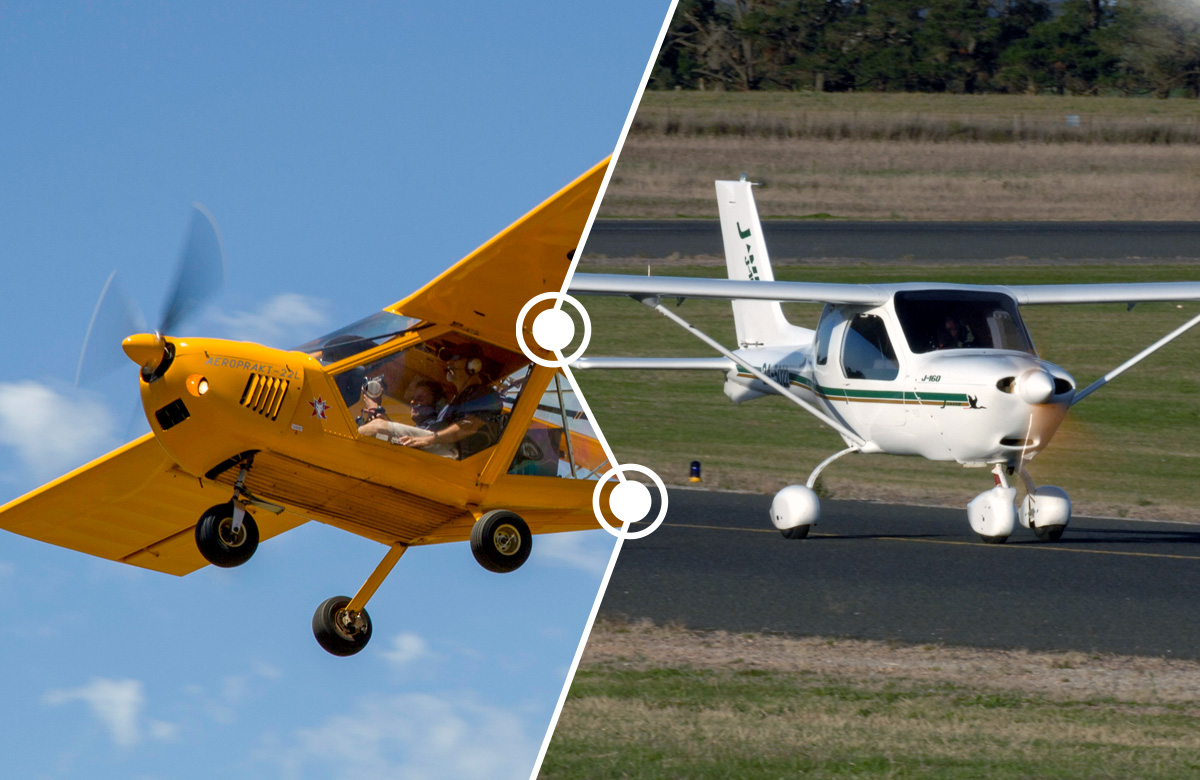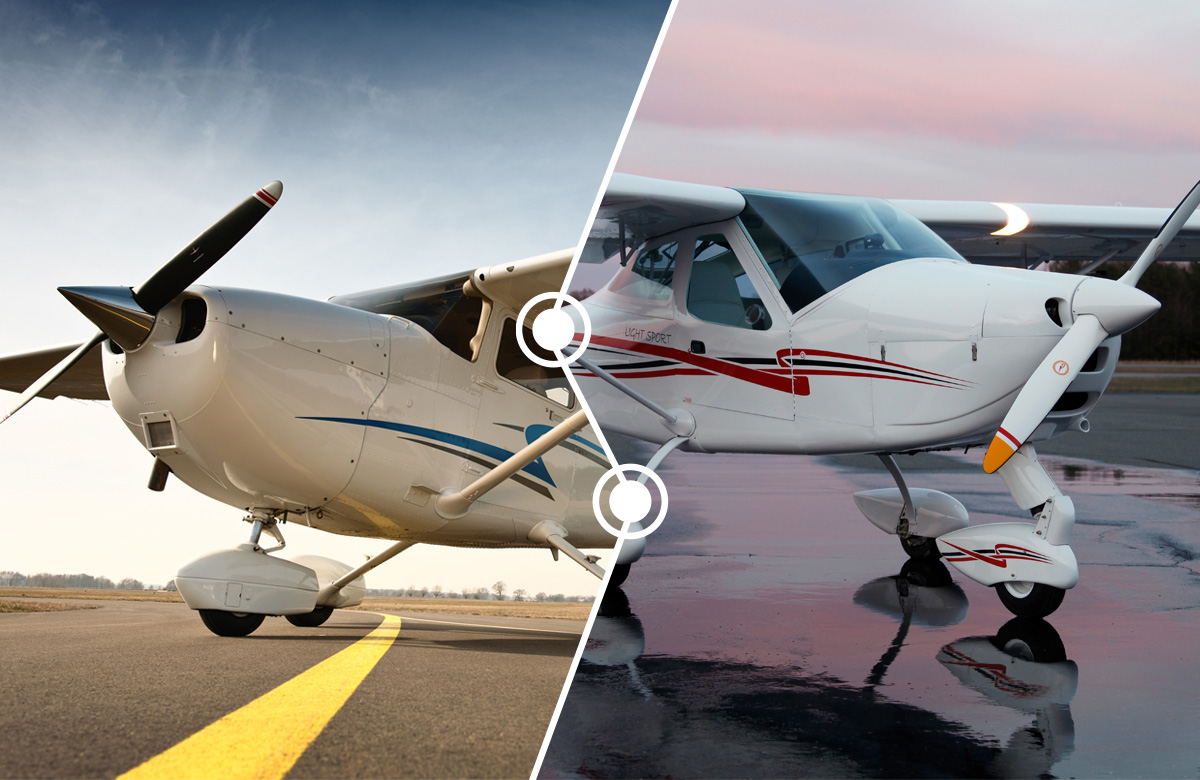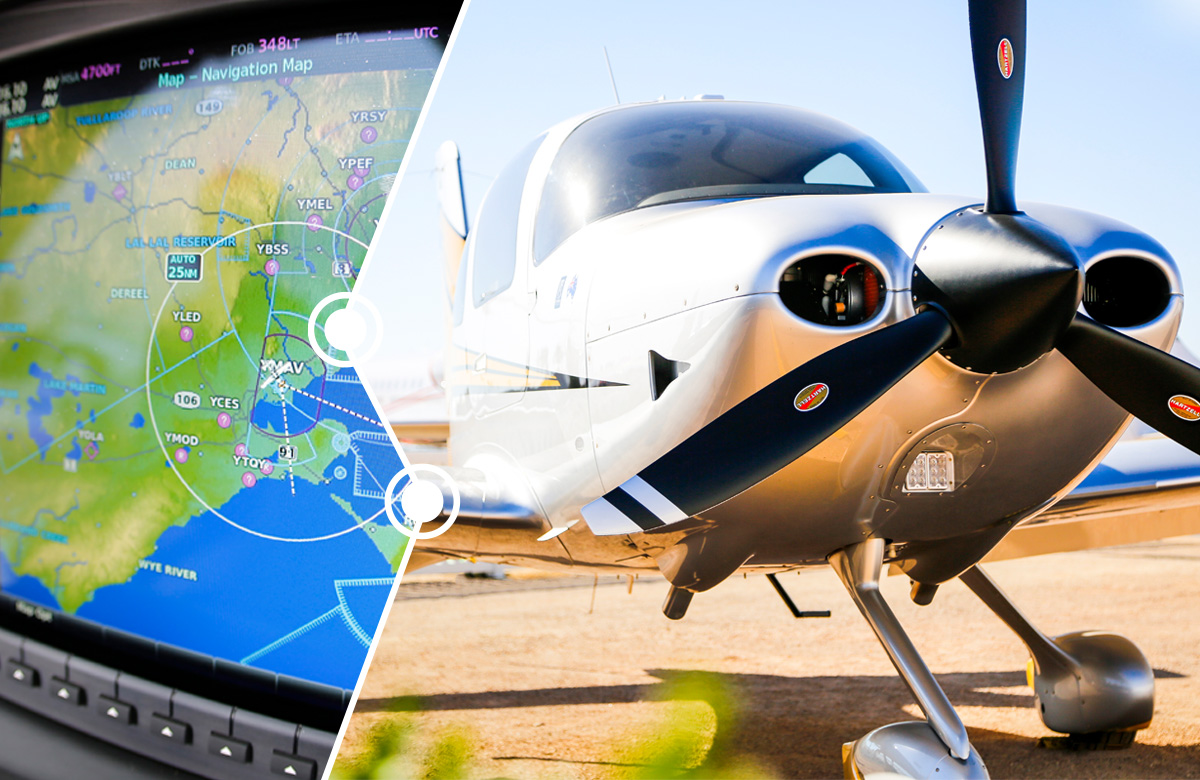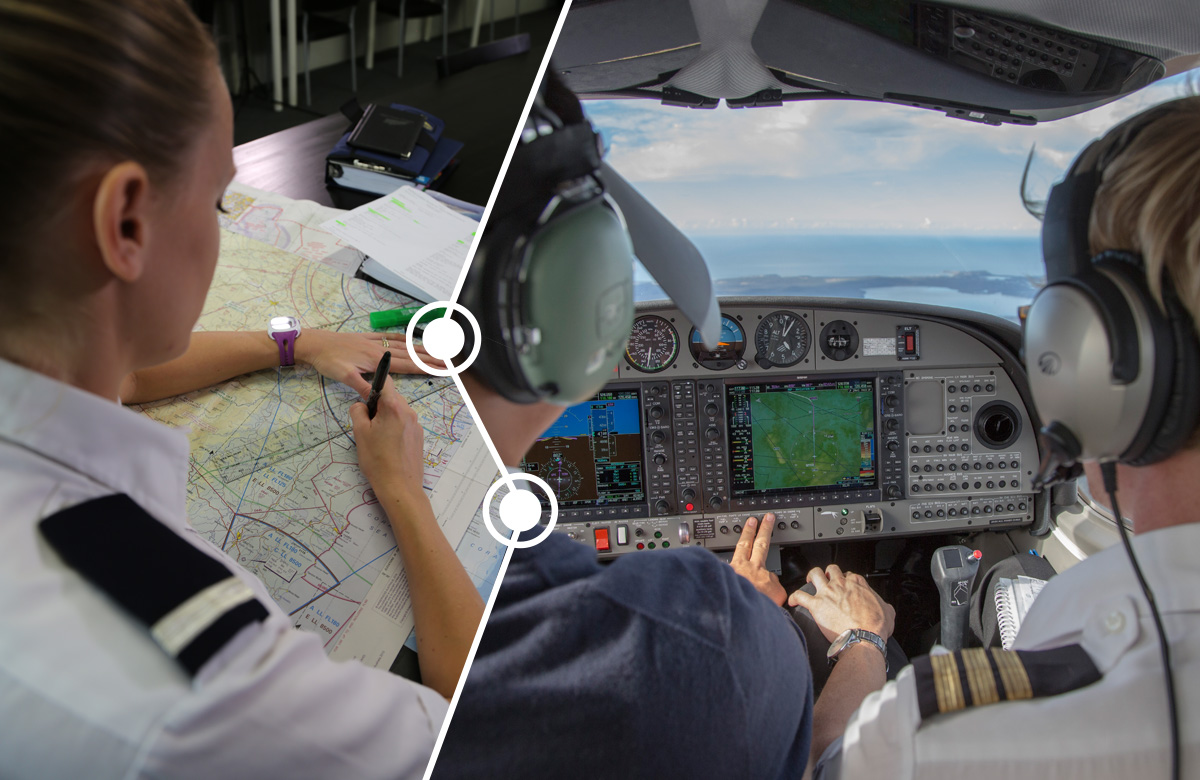Have you ever wondered whether, if you had your chance to learn to fly all over again, you’d do it differently? Whether the benefit of hindsight, experience and modern developments would change your path? Maybe you learned in a 152, or even a Chipmunk, in the days of dead reckoning and Av-Fax; maybe you learned in a glass cockpit Cirrus and are wondering about similar, smaller recreational aircraft?
They say hindsight is 20:20. 2019 marks my tenth year writing about aviation and having flown in almost every type of RA and GA aircraft, I have begun to wonder would I take a different path to my PPL (and nearly CPL) if I did it all over again? And would my new path be cheaper, more efficient and safer?
Like so many pilots, I was introduced to aviation via a trial introductory flight. Mine was given as a birthday present as an alternative to shoes. Conducted in a Bankstown ‘sausage factory’ flying school (that is no longer operational) in a late 1960s 152, I had four instructors over the first seven lessons, after which I escaped and headed out to the quieter Hoxton Park (which is, sadly, no longer operational either). There, in a Beech Skipper, my young instructor took me to solo. After the closure of Hoxton Park, I moved to Camden where I finished my PPL in an old Piper Warrior. For various articles over the years, I gained an RA-Aus certificate, in a Foxbat, but flew all the types over my two years as deputy editor of Sport Pilot magazine. I achieved my tailwheel endorsement in a Citabria. My first ever aircraft review paid homage to the Beechcraft Bonanza; my most exciting was a wing walk astride a vintage Stearman. I commenced my CPL in a Piper Dakota, then a 2000s C182, then an asthmatic Cherokee Six, then a Cirrus SR20 before being distracted by a full-time job as an aircraft sales manager.
While I acknowledge my route to CPL may be a little bumpier than some, with my sixteen different instructors, three aerodromes, eight flying schools and eleven aircraft types, I suspect that a great deal of pilots reading this went the traditional route of Cessna 152, Cessna 172 or Piper Cherokee, followed by Cessna 182—a tried and tested route to the PPL/CPL since the 1970s.

A lighter option
Curious to explore the choices available to pilots learning to fly in 2019, I spoke to recently qualified pilots who have completed their recreational pilot licences and/or RA-Aus certificates. A common strategy among students taking this path to their PPL licence is to start with the RA-Aus certificate, convert to the CASA-administered recreational pilot licence (RPL) and then step up to a full private pilot licence (PPL) at a later stage.
The first, most obvious difference in learning to fly a recreational or light sport aircraft, is the price. Evan commenced his training in a Jabiru J-160c and paid $110ph solo/$160 dual. Jamie learned in a Tecnam P92 at $120ph solo/$180 dual. And Mel learned in a Foxbat at $120ph solo/$180 dual. Compared to a Cessna 152 at $180ph solo/$270 dual or a Piper Warrior at $210ph solo/$310 dual, it’s easy to see the appeal of a ‘lightie’ from a financial perspective.
‘Starting in an RA-Aus aircraft allowed me to get my navigation endorsement and fly anywhere in Australia outside controlled airspace,’ says Jamie. ‘I gathered up a lot of hours this way before converting to the CASA RPL.’ At $180 per hour dual, compared to $270 in a Cessna 152, Jamie was able to complete his RA-Aus certificate while still at high school. In fact, Jamie achieved his RA-Aus certificate before getting his driving licence!
‘I decided to convert to a CASA-issued RPL to do my Cirrus transition training in the SR20, which meets the weight restrictions of the RPL. Although the cost was greater, I was able to take advantage of an introductory offer at a new school—I only needed a few hours in the Cirrus, as I’d flown regularly in the Tecnam. I achieved my controlled airspace/airport endorsements and ASIC during the training, and I decided there was no need to step up to a PPL as the RPL, nor even RAAus, were not restrictive in any way.’
Now in full time employment, he has reverted to flying the Tecnam P92. ‘It is the cheapest, most fun aircraft I have flown, and there is one at the airport 30 minutes from me.’ Able to fly with three passengers, Jamie regularly cost shares his flights (three in the SR20 and one in the Tecnam) with his friends and has travelled around Victoria at a fraction of the cost of a PPL pilot hiring a Warrior or similar.
An efficient option
Having commenced his training in a Jabiru J160, Evan quickly progressed to a Tecnam P2002 Sierra gaining his navigation endorsement and passenger endorsement in RAAus. At this stage, Evan got a Class two medical and converted to the CASA RPL.
‘Adding this all together made my licence a “pseudo PPL”,’ he says, ‘which removed many of the restrictions that a newly-minted RPL holder might have. I consider myself lucky: the aircraft I stepped into was very similar in many ways to the RAAus aircraft I was stepping up from—two seat, side-by-side, low wing, bubble canopy—so I didn’t have much trouble getting used to managing the aircraft. I went from the Tecnam P2002 Sierra to the Liberty XL2. The biggest adjustment was to a convoluted airport layout and air traffic control: making sure I was actually taxiing where I said I was taxiing. I have since come to enjoy working with the tower, as I feel it brings an extra set of eyes that are looking out for you.’

A modern option
Both Evan and Jamie were quick to point out that their training aircraft offered modern equipment, often with glass cockpits. A further advantage, according to recent PPL via RA-Aus and RPL pilot Mel, was the choice of relatively new aircraft, with glass cockpits integrated GPS and sometimes even autopilots.
After Mel converted to an RPL, she had difficulty finding a GA aircraft she wanted to fly, and so progressed through her RPL in a Sportcruiser, adding a controlled airspace endorsement at a metro Class D airport. Progressing to a glass cockpit equipped Warrior and then Cessna 182, Mel was able to continue her flying without encountering a traditional six-pack equipped aircraft. ‘I am a typical modern young pilot,’ she says. ‘I fly with a tablet in a glass cockpit aircraft and am a huge user of internet forums. I am in a constant dialogue with other pilots, always asking questions in an attempt to learn more about aviation! My final destination is the airlines and I feel my curiosity and enthusiasm will stand me in good stead.’
Does lighter mean safer?
According to the ATSB, in the 10-year period of 2005 to 2014, 254 aircraft have been involved in fatal accidents in Australia, leading to 374 fatalities. Most fatalities (240) were in CASA-registered (VH registrations) general aviation aircraft (including aerial agriculture, mustering, search and rescue, flying training, private and sport operations). Non-CASA registered recreational aircraft (aeroplanes, weight shift hang-gliders, trikes, paragliders and powered parachutes and gyrocopters) accounted for 98 fatalities. Commercial air transport (passenger regular public transport, charter and medical transport) accounted for 36 fatalities.
Across the 10-year period, the accident rate per hours flown was the highest for recreational aeroplanes, followed by aerial agriculture and private and sport aviation. However, all VH registered private and sport operations (including gliding) had a similar accident rate as that for all non-VH recreational flying combined. Within recreational aviation, half of all gyrocopter accidents were fatal and almost a third of weight shift aircraft accidents were fatal.
The reporting of safety incidents to the ATSB from recreational (non-VH) aviation has increased more than tenfold in the last 10 years. This is due to both the growth in recreational flying and improving awareness of reporting requirements.
Recreational Aviation Australia states, ‘[We are] progressively working towards improving safety outcomes through a holistic approach to safety management and the adopting of an open and fair reporting culture. Our fleet of 3500 aircraft are some of the youngest aircraft on an Australian register. This means that these aircraft are equipped with the latest technologies. Additionally, many of our pilots now use tablet-based navigation software similar to what most of us are used to in today’s cars.
‘Our pilots are trained by qualified, skilled and experienced instructors and have access to a range of training rescues. Additionally, our instructors undertake rigorous checking and testing on a regular basis and our qualified staff oversee regular audits of training schools and associated practices. At RAAus safety is our first priority.’
‘I was impressed by the safety culture in my flying school,’ says Mel. ‘Walkarounds were drilled into us, of course, as well as check-lists, but what I liked most about the lighter aircraft was its large envelope between the stall-speed and the approach speed. The Foxbat stalls at a mere 26 knots and yet the approach speed is the same, pretty much, as the 152. It’s great for practicing slow flying, which is an area some students can come undone in, in a heavier aircraft.’

Is lighter easier?
Mel’s observation is that a light aircraft is, as you would expect, lighter. ‘I had done a TIF in a Piper Warrior, and one in a Foxbat, so I could make an educated choice,’ she says. ‘I chose the Foxbat because it was lighter, more modern and much cheaper. I was very surprised by the difference in weight, particularly on the control surfaces. Interestingly, because the Foxbat is lighter due to less inertia, I felt I had to fly it more! I think my stick and rudder skills are better as a consequence of flying a lighter aircraft, especially on a windy day.’
Taking aviation theory in small steps, from RA-Aus to RPL to PPL, offers an advantage to new students, avoiding having to learn about aircraft types and procedures that are not relevant to light aircraft.
For Evan, who since his PPL has stepped up to the SR22, the biggest learning curve regarding the PPL was the theory. ‘The biggest eye-opening experience was actually stepping up from RPL to PPL. It wasn’t the flying part that was trickiest—it was more a case of the scope of the theory exam. Coming from RA-Aus where the scope is small aircraft, to PPL where the scope is possibly a private jet was a bit jarring. I got some questions wrong not because I didn’t know the theory, just because the rules are much broader than just a small single engine aircraft.’
Clearly, the path to a pilot’s licence offers more choice, flexibility and cost-saving options that it did even ten years ago. With improvements in technology, reporting and education, the recreational path appears to be a valid choice for the student pilot.
Personally, if I were learning to fly today, I would start with gliding, spend the next 30 hours in a low wing RA-Aus aircraft (like the Brumby or the Tecnam), progress to an SR20 for my RPL and concurrently spend my weekends flying an old-school aircraft such as a Tiger Moth. I would conduct my PPL in the SR20 and (because this is a dream scenario) I would go on to buy both an SR22 and a Beechcraft Staggerwing. Ahhh, the beauty of hindsight …

Recreational Pilot Certificate: |
|
CASA-issued Recreational Pilot Licence (RPL): |
|
Private Pilot Licence (PPL) or higher licence: |
|



Comments are closed.